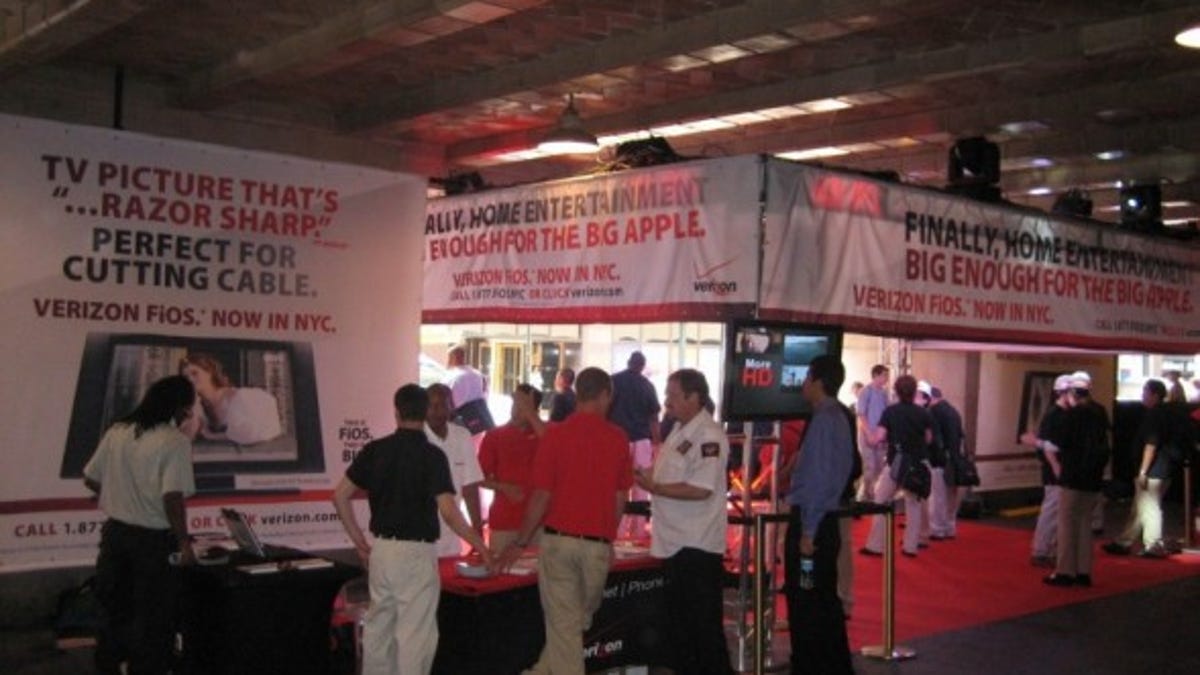New York City sues Verizon over unfinished fiber rollout
Nine years ago, Verizon signed a deal to provide all NYC households with access to its fiber-optic Fios service by 2014. The city is tired of waiting.

Verizon salespeople showed off the Fios service in New York City back in 2010.
No one likes it when the cable guy runs late, especially New Yorkers.
Nine years after signing a contract with Verizon to bring fiber-optic internet and television service to the city's 3.1 million households -- and nearly three years after the 2014 deadline to finish the job -- New York City officials are sick of waiting. The city filed a lawsuit Monday that alleges breach of contract.
"Verizon must face the consequences for breaking the trust of 8.5 million New Yorkers," New York Mayor Bill de Blasio said in a statement. "Verizon promised that every household in the city would have access to its fiber-optic Fios service by 2014. It's 2017 and we're done waiting. No corporation -- no matter how large or powerful -- can break a promise to New Yorkers and get away with it."
Verizon's take on the situation? Read the fine print.
"In negotiating the agreement, both parties understood and agreed that Verizon would generally place its fiber-optic network along the same routes as had been used for its copper network, and would use similar strategies for accessing individual buildings," Verizon General Counsel Craig Silliman wrote to Anne Roest, commissioner of NYC's Department of IT and Telecommunications (DoITT), in a letter seen by Ars Technica. Verizon confirmed the letter's authenticity to CNET.
According to Verizon's letter, the agreement with the city omits traditional language specifying that a household is "passed" only when fiber-optic cables are installed in front of a house or apartment. Absent that language, Verizon apparently believes it has more wiggle room for its Fios rollout than the city acknowledges.
"A political change in City Hall is not a basis to reinterpret long-agreed contractual provisions or to ignore years of consistent DoITT findings," the letter adds.
Fios, which offers television, high-speed internet and telephone services, has been Verizon's effort to expand beyond traditional phone service and take on cable and satellite companies.
Both NYC's lawsuit and Verizon's defense grind down into the fine logistical details of a citywide fiber-optic installation, a massive undertaking by any stretch.
On Verizon's end, a company spokesperson pointed out that the telecom provider has already invested $3.7 billion into the Fios roll-out, and plans on investing an additional $1 billion to help complete the job. "At a time when communities across the country are seeking and encouraging broadband investments like these, the City is inexplicably turning its back on this investment and its residents by pursuing foolish litigation that will harm jobs, business growth and technology competition throughout all five boroughs," the spokesperson tells CNET, adding:
"The De Blasio administration is disingenuously attempting to rewrite the terms of an agreement made with its predecessor and is acting in its own political self-interests that are completely at odds with what's best for New Yorkers. We plan to vigorously fight the city's allegations."
At any rate, if you live in New York and you don't have fiber-optic access yet, maybe don't hold your breath.
Updated on 3/14/17 at 3:02 PM EST to include comment from Verizon.
Virtual reality 101: CNET tells you everything you need to know about VR.
Tech Enabled: CNET chronicles tech's role in providing new kinds of accessibility.

